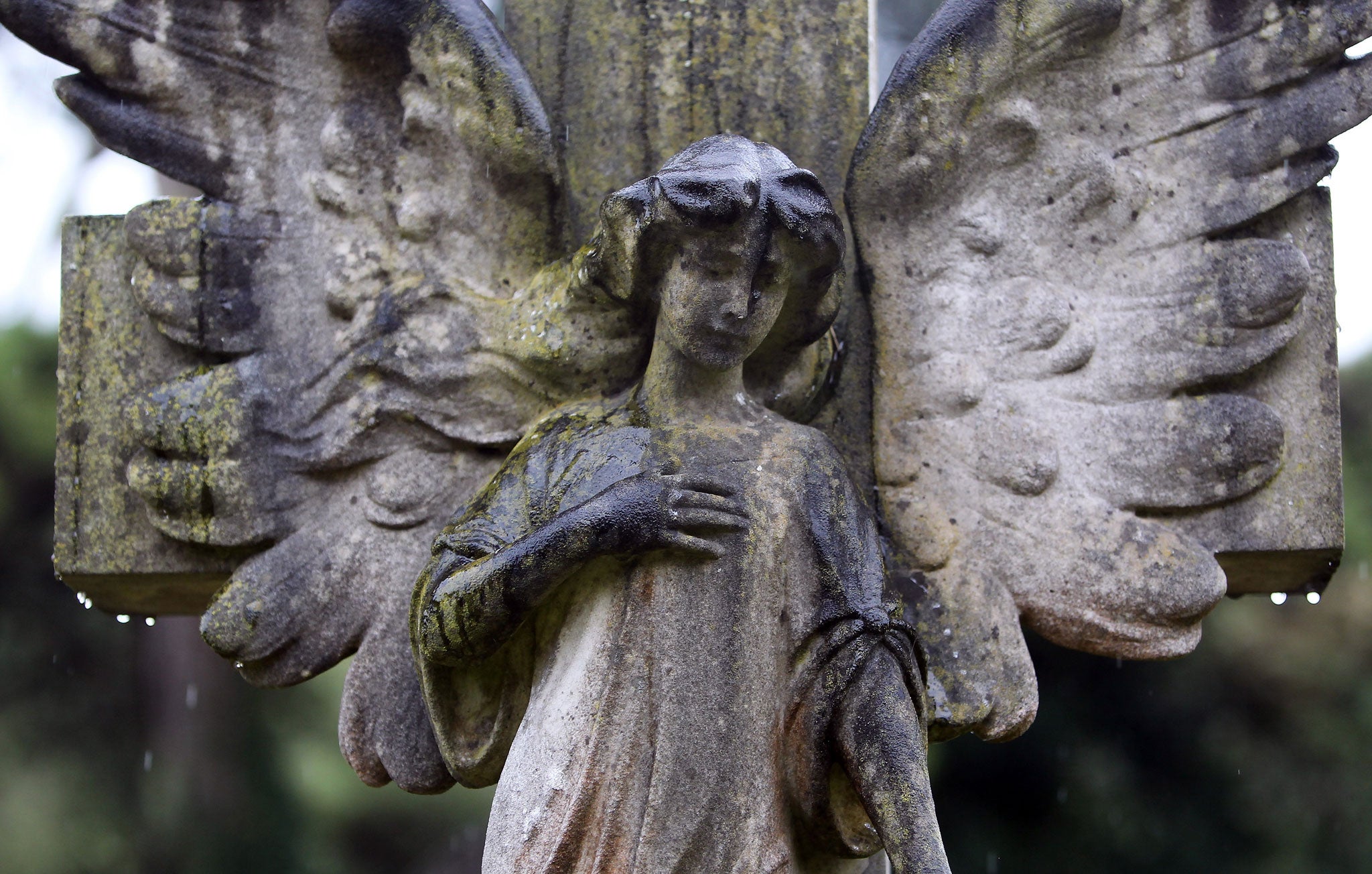How to Read a Graveyard, By Peter Stanford
Poetic and humane, this tour of resting-places turns the mind to last things, and to first principles.

Socrates said it was foolish to fear death. How, he asked, can you be afraid of something that you know nothing about? The power of imagination has come a long way since 400BC. Can even sceptical non-Catholics read James Joyce's excruciating description of the realms of hell in Portrait of the Artist as a Young Man without feeling, if only for a moment, that it might be terrifyingly true?
At the very least, we must wonder about the ton of earth that will be tamped down above our coffins, or the 90 minutes of flames at 900C required to reduce us to about 5lbs of cremulated fragments. Peter Stanford's How to Read a Graveyard is a humane, delicately religious attempt to celebrate the one fate we will all share, but probably think and talk the least about.
Walking around cemeteries "is rather like rummaging among the old socks that lie buried in frayed pillowcases. It sets us remembering, reflecting, and puzzling." Stanford visits ten graveyards – mostly famous, some quietly surprising – and gives us a stream of historical facts, detailed observations, conversations and speculations. This is a gentle, timely polemic against the marginalisation of graveyards as a symbol of our sense of existence, memory and the passage of time.
Stanford quotes James Stevens Curl, author of Death and Architecture, who suggests that in modern societies burials have become "suggestive of emotional amnesia." What do we think when confronted by the tombs in the via Appia Antica outside Rome? That they are sacred? Or just heritage stuff worth photographing, rather than thinking about in terms of our relationship with death?
Stanford examines an interesting range of burial places – High Church, Victorian commercial, culturally iconic, and what might be described as alt-organic at the Chiltern Woodland Burial Park. We follow him through the excavations beneath St Peter's basilica in Rome where the saint's bones are said to lie; we duck down into the chill of the catacomb of St Callixtus; we flinch, perhaps, at his slightly over-dramatic portrayal of Greyfriars' Kirkyard in Edinburgh, where Burke and Hare robbed graves; we "do" Jim Morrison's grave at Père Lachaise in Paris.
But it's not Stanford's assiduous fact-finding that resonates. It's those moments when he conveys impressions of graveyards that strike home with a poetic and humane weight. In his chapter on the cemeteries of the Commonwealth War Graves in France, which skilfully balances history and metaphysics, there's a fine passage on the small resting place for the Chinese and Indian coolies who died in the First World War: "Anyone who doubts the power of landscape will find here, where the public and private intertwine, proof of its ability to console."
How are we to reconcile this well cared-for sanctuary with the fact that almost every day, in London, at least one child of poor parents is deposited in an open-pit grave that already contains small bodies? This is a literal return to the medieval mass burial of commoners.
Stanford's book reminded me of a visit to the tent-shaped concrete mausoleum of the Victorian explorer, Sir Richard Burton, in the graveyard of St Mary Magdalene's Church in Mortlake, London. Near it is the burial plot of Charles Aloysius Barnewall, 19th Baron Lord Trimlestown, who died in 1990.
Hanging from a skimpy chain around the cross was a small white plastic plaque, like those you see in the windows of old-fashioned shops, announcing "Open" or "Closed". In black lettering: "Nick Barnewall, Dealer in Twentieth Century Objects 26.10.51 – 30.5.91".
Cryptic, plasticised words and an extraordinary little mausoleum, almost side by side: two very different expressions of death and memory that together, on that wet winter's day, breathed vivid life into an unremarkable London churchyard. If that image resonates in your mind, as it still does in mine, you'll find How to Read a Graveyard dead marvellous.
Subscribe to Independent Premium to bookmark this article
Want to bookmark your favourite articles and stories to read or reference later? Start your Independent Premium subscription today.

Join our commenting forum
Join thought-provoking conversations, follow other Independent readers and see their replies